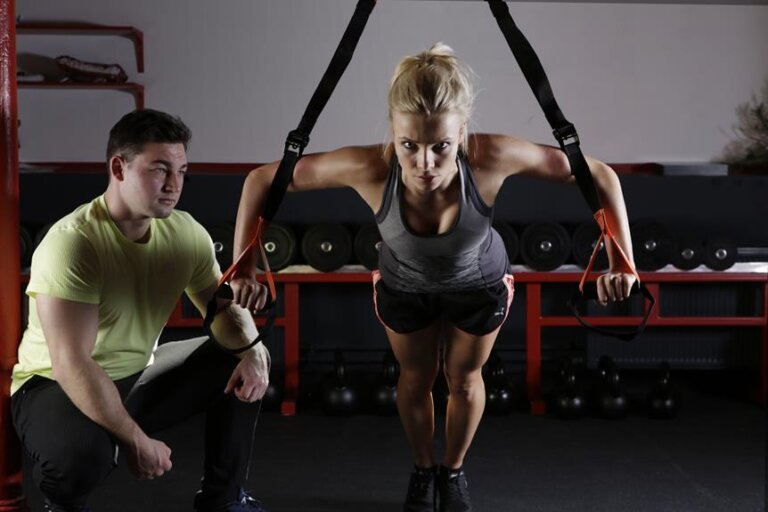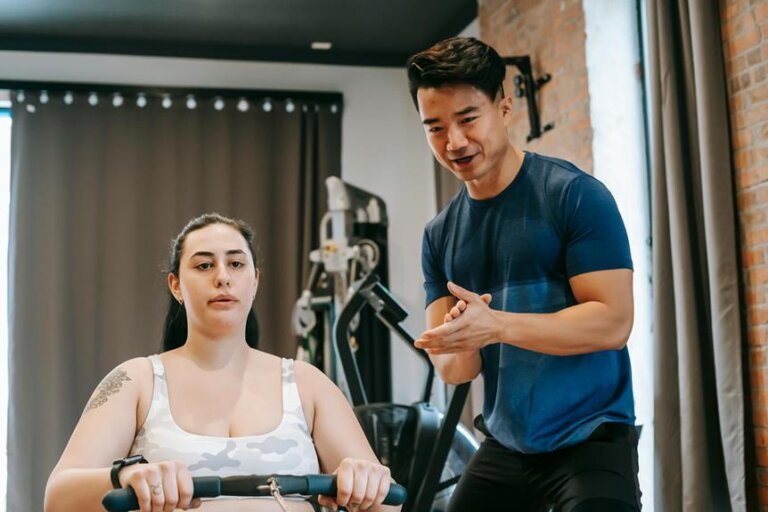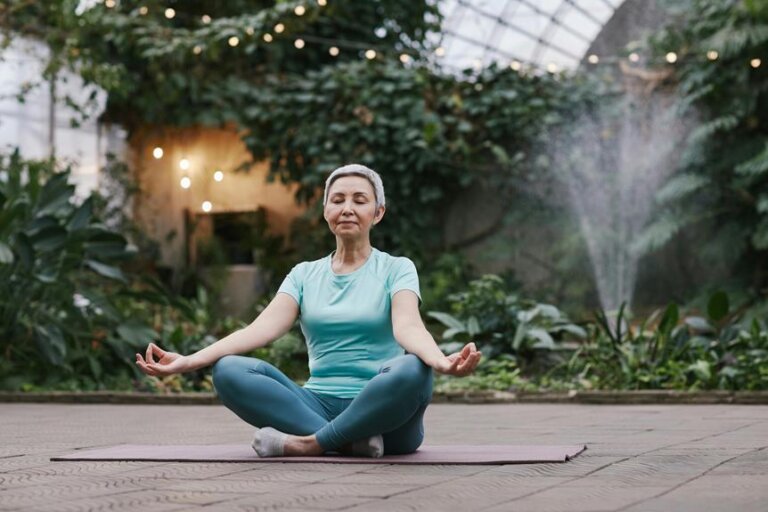The Ultimate Guide to Women's Fitness Workouts
Did you know that, according to a report by the U.S. Department of Health and Human Services, only 20% of women meet the national physical activity guidelines? You're probably wondering why, especially when regular exercise is so beneficial to our health.
You may be one of the many women who struggle to find the perfect workout routine, or perhaps you're not sure how to start. Well, you're in luck! This ultimate guide to women's fitness workouts will equip you with all the essential knowledge.
Curious to find out more? Let's dive in!
Understanding the Basics of Fitness
Before diving into specific workouts, it's crucial that you grasp the basics of fitness, which lay the foundation for your fitness journey. Like any other journey, you need to know your starting point and destination. For fitness, your starting point is your current health status. Get a medical check-up to identify any potential health risks. Your destination is your fitness goal, be it weight loss, toning, or overall health improvement.
Next, understand the importance of a balanced diet. You can't out-exercise a bad diet. So, you need to fuel your body with the right nutrients. Remember, your food is your fuel. Eating right isn't just about calorie-counting – it's about consuming a variety of nutrients to support your physical activity.
Lastly, don't overlook the importance of rest and recovery. Your body needs time to repair and build muscles after workouts. Ensuring you get enough sleep and practicing stress management techniques contribute to better recovery.
Mastering these basics will prepare you for the next step: incorporating specific workouts into your routine. But we'll dive into that in the next subtopic. For now, focus on these foundational aspects of your fitness journey.
Incorporating Strength Training
You've got the basics of fitness down, now let's move on to strength training.
We'll guide you through understanding the fundamentals, building your own routine, and exploring the numerous benefits.
Ready to feel stronger and more confident? Let's get started.
Understanding Strength Training Basics
Once you've mastered the basics of cardio, it's time to incorporate strength training into your women's fitness workouts. Strength training is essential in building lean muscle, boosting metabolism, and improving bone density. It's not about bulking up, but rather enhancing overall body strength and tone.
Understanding the basics is key. Strength training involves resistance, such as weights, to work your muscles. You're not just lifting, you're contracting your muscles against a force. It's important to use proper form to avoid injury and maximize results.
Building a Strength Routine
To build a strength routine into your fitness regimen, start by choosing exercises that target all major muscle groups, maintaining a balance between upper and lower body workouts. Include exercises like squats, lunges, bench presses, and pull-ups. You'll also want to select weights that challenge you, but don't strain your muscles excessively.
Plan your routine in a way that gives each muscle group adequate rest between sessions. For instance, work on your upper body one day, and your lower body the next.
Benefits of Strength Training
Incorporating strength training into your fitness routine offers a multitude of benefits that can significantly improve your overall health and wellbeing. You'll not only build lean muscle and boost your metabolism, but you'll also improve your bone health and posture. Strength training isn't just about lifting weights, it's about enhancing your overall body strength and stability.
It aids in weight loss by increasing your resting metabolic rate, meaning you'll burn calories even when you're not working out. It can also reduce your risk of injury by improving your balance and coordination. So, don't shy away from adding some weight lifting to your routine. You're not just sculpting a stronger body, you're also paving the way for a healthier, more empowered you.
The Importance of Cardio Exercises
You can't overlook the vital role cardio exercises play in any fitness regimen, boosting your heart health and accelerating weight loss. Cardio, short for cardiovascular exercise, isn't just about running miles or doing intense aerobics. It involves any activity that raises your heart rate, improves circulation, and burns calories.
This type of exercise strengthens the heart and lungs, reduces the risk of heart disease, and helps manage your weight. It's also a great stress reliever, helping you to unwind and sleep better. Regular cardio can even improve your cognitive function, keeping your mind sharp and focused.
Don't limit yourself to just one type of cardio. Mix it up! Try cycling, swimming, or even dancing, to keep things interesting and fun. You'll be more likely to stick with your workout routine if you enjoy it.
Incorporating Flexibility and Balance Workouts
You can't underestimate the power of flexibility and balance workouts in your fitness regimen. They not only enhance your posture but also offer numerous other benefits.
Let's explore how you can combine flexibility and balance workouts to get the most out of them.
Benefits of Flexibility Workouts
Undoubtedly, flexibility workouts offer a myriad of benefits, enhancing not only your physical well-being but also improving your balance and body coordination. They're essential for maintaining a comfortable range of motion in your joints. Without it, the muscles surrounding the joints can become short and tight, limiting your ability to move freely and comfortably.
Flexibility workouts also boost your performance in physical activities, providing greater power and agility. You'll notice an improvement in your body's efficiency and overall athletic performance. Plus, these workouts reduce your risk of injuries by aiding your body's ability to withstand physical stress.
Lastly, incorporating flexibility exercises into your routine can aid stress reduction. Stretching relaxes tight, tense muscles that often accompany stress. So, embrace flexibility workouts, for they truly promise a healthier, more balanced you.
Balance Workouts and Posture
Building on the benefits of flexibility, it's equally important to consider balance workouts and posture in your fitness regimen. Balance exercises, like yoga or tai chi, enhance your stability and prevent falls, a key concern as you age. They're also a great way to strengthen your core and improve your posture.
Poor posture can lead to various health issues like back pain, breathing problems, and even digestive issues. Therefore, make sure to include posture-correcting exercises such as planks and bridges in your routine. Remember, posture isn't just about standing straight—it's about maintaining the correct alignment of your body parts, even when you're sitting or lying down.
Combining Flexibility and Balance
Incorporating flexibility and balance workouts into your fitness routine isn't just beneficial, it's essential for comprehensive health and wellness. When you combine these exercises, you're working on your body's core stability, improving your posture, and reducing the risk of injuries.
Yoga and Pilates are examples of workouts that enhance both flexibility and balance. They're not just about stretching, but also about holding positions that challenge your balance. These workouts can make everyday activities easier, like bending to tie your shoes or reaching for an item on a high shelf. Additionally, they can improve your performance in other exercises and sports.
Nutrition and Hydration Essentials
Fueling your body with the right nutrients and staying hydrated are key elements in any successful fitness regime. Without proper nutrition, you won't have the energy to perform at your peak. This means consuming a balanced diet rich in proteins, carbs, and healthy fats. Proteins are essential for muscle repair and growth, carbs provide energy, and fats aid in vitamin absorption.
Hydration, on the other hand, is just as crucial. When you're working out, you're losing fluids that need to be replaced. Dehydration can greatly impair your performance and even lead to serious health issues. Therefore, it's important that you drink enough water before, during, and after your workout.
But, don't forget about electrolytes. They're vital for maintaining balance in your body's fluids. You can replenish these through sports drinks or natural sources like fruits and vegetables.
Lastly, remember that timing matters. Try to have a light meal or snack an hour or two before you exercise to fuel your workout. And don't skip the post-workout meal – your body needs it to repair muscles and replenish glycogen stores.
Stick to these essentials and you'll be well on your way to a successful fitness journey. Remember, nutrition and hydration are as important as the workout itself.
Setting Realistic Fitness Goals
When it comes to achieving your fitness dreams, it's vital that you set attainable, realistic goals. Remember, it's not about striving for perfection but progress. Don't set yourself up for failure by aiming for the impossible. Instead, establish goals that challenge you but are within your reach.
Start by assessing your fitness level. Be honest with yourself about where you're starting from. You can't run a marathon if you've never run a mile. Next, determine what you want to achieve. Do you want to lose weight, build muscle, or increase your stamina? It's essential to have a clear vision of your destination.
After you've figured out your current fitness level and your desired outcome, you can then set your goals. Make sure they're specific, measurable, achievable, relevant, and time-bound, often referred to as SMART goals. For instance, instead of saying, 'I want to lose weight,' say, 'I want to lose 10 pounds in two months.' This way, you'll know exactly what you're striving for, and you can track your progress along the way.
Overcoming Common Fitness Obstacles
While striving for your fitness goals, you may encounter several obstacles, but understanding and overcoming these can significantly enhance your success rate. Lack of time is a common challenge. However, you can overcome this by integrating short, high-intensity workouts into your routine. You don't need hours at the gym; a focused 30-minute session can be just as effective.
Another common obstacle is a lack of motivation. To combat this, set small, achievable goals and celebrate when you reach them. It's also helpful to find a workout buddy; having someone to hold you accountable can boost your motivation.
You may also face physical constraints, like injuries or health conditions. It's crucial to listen to your body and modify your workouts accordingly. Don't push yourself to the point of pain. Instead, focus on what you can do and gradually build up your strength and endurance.
Lastly, don't let a lack of knowledge deter you. If you're unsure, seek professional advice. Personal trainers, physiotherapists, and dietitians can provide valuable guidance. Remember, overcoming obstacles is part of the journey to reaching your fitness goals.
Frequently Asked Questions
What Specific Exercises Can Help Alleviate Menstrual Cramps?
You're asking about exercises for easing menstrual cramps. Yoga, specifically poses like child's pose or bridge pose, can help. Also, light cardio like walking or swimming might ease discomfort. You'll feel better soon!
How Does Menopause Impact a Woman's Fitness Routine and How to Adapt It?
Menopause can affect your stamina and bone density. You'll need to adapt your fitness routine, focusing more on weight-bearing exercises and flexibility training. Also, remember to stay hydrated and take breaks when needed.
Are There Any Specific Workouts Recommended for Pregnant Women?
Yes, there are. You should focus on low-impact workouts like swimming, walking, or prenatal yoga. Always consult your doctor before starting any exercise program during pregnancy to ensure it's safe for you and your baby.
How Does Hormone Fluctuation Throughout a Woman's Cycle Affect Her Fitness Performance?
Like a rollercoaster of ups and downs, your hormone fluctuations can affect your fitness performance. You might feel more energetic or weaker at different times of your cycle, so it's important to listen to your body.
What Are Some Safe Exercises to Help With Postpartum Recovery and Strengthening?
You're asking about postpartum exercises. Start with pelvic floor exercises and gentle walking. Then, move onto bodyweight exercises like squats and lunges. Always consult your doctor before starting any postpartum workout routine.
Conclusion
Remember, ladies, consistency is key in any fitness journey. An interesting fact to keep in mind: according to the American Heart Association, women who incorporate 30 minutes of exercise five days a week are 30% less likely to develop heart disease.
So, whether it's strength training or cardio, always keep moving, stay hydrated, eat healthily, and you'll be smashing your fitness goals in no time.
Overcoming obstacles is tough, but it's always worth it.






